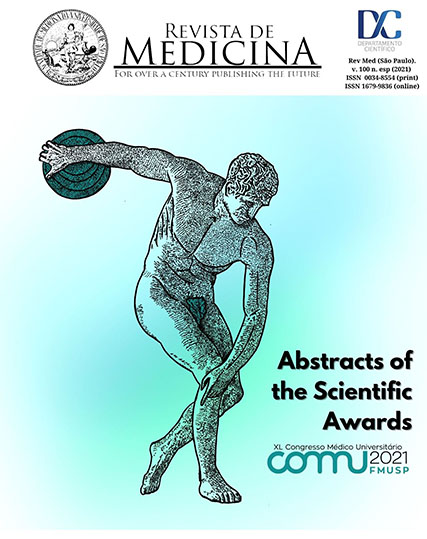PPRP and LPRP regenerative effect in 3D muscle injury celular model
DOI:
https://doi.org/10.11606/issn.1679-9836.v100iespp17-17Palavras-chave:
PRP, Spheroids, Regenarative medicine, MuscleResumo
Introduction: Extensive muscle injuries are a clinical challenge due to the formation of fibrous tissue that can lead to chronic pain and disability. Therefore, the search for alternative treatments to regenerate the injured muscle is mandatory. Platelet-Rich-Plasma is an autologous blood derivative in which platelet concentration is above peripheral blood levels. Platelets secrete growth factors and signalizing molecules and even though it is already used in clinical practice for tissue regeneration with positive outcomes, there are no concrete evidence of its efficacy on muscle tissue. The goal of this study was to evaluate the effects of PPRP (poor in leukocytes) and LPRP (rich in leukocytes) in 3D C2C12 muscle cell cultures, after injury with Cardiotoxin (CTX) and BaCl2. Methodology: On day 0 spheroids were prepared using scaffold-free technology in agarose micro-molds. Injury was induced two days later by adding CTX (1uM) or BaCl2 (0.7%). Murine PPRP and LPRP were added on day 4 and on day 6 the spheroids were collected for analysis. The volumes were calculated using brightfield images, and their viability was quantified by calcein/7AAD staining. Results: The spheroids were observed for 16 days. Regarding the spheroid volume, we could observe an exponential growth curve, reaching a plateau by day 12. On day 1, the volume was de 2,6x107 ± 3,83x106 um3 and on the last day, 8,68x107 ± 3,72x107 um3.The necrotic center volume was 5,96x106 ± 2,24x106 um3 on day one e presented a reduction tendency by the fourth day. The total spheroid volume was 2.7 X larger than the necrotic center volume after a week of growth (p<0.05), and 22X larger after 15 days (p<0.01). After characterization, the spheroid injury was standardized by adding com CTX 1uM, BaCl2 (1.4%) 50%, 12.5%, e 6.25% in volume, for 48 hours. Afterwards, injury was induced with com BaCl2 0.7% or CTX 1uM, followed by PRP treatments. BaCl2 injury led to 60.5% reduction in spheroid volume (p<0.001), and 54% reduction in its viability when compared to control group (p<0.05). There was no statistic difference between CTX spheroids volume and control group volumes, but CTX reduced viability in 80% (p<0.0001). In groups injured with BaCl2, LPRP treatment increased spheroid volume in 70% (p<0.05). However, there was no statistically significant increase in viability with PRP treatment. In Groups injured with CTX, treatment with PPRP increased viability in 50% and LPRP treated groups were 10X larger than CTX alone (p<0,0001), and 4X larger than the group treated with PPRP (p<0.05). Conclusion: Our data shows for the first time the characterization of a 3D muscle injury model, and the effects of PRP in viability increase and positive influence on the spheroid’s growth. Though preliminary, these results may have great relevance for future therapy studies and reducing animal model use.
Downloads
Referências
não
Downloads
Publicado
Edição
Seção
Licença
Copyright (c) 2021 Beatrice Rodrigues Ranieri, Sofia Mila Cantu de Sales, William Filipone, Wesley Rodrigues, Roberta Sessa Stilhano

Este trabalho está licenciado sob uma licença Creative Commons Attribution-ShareAlike 4.0 International License.




